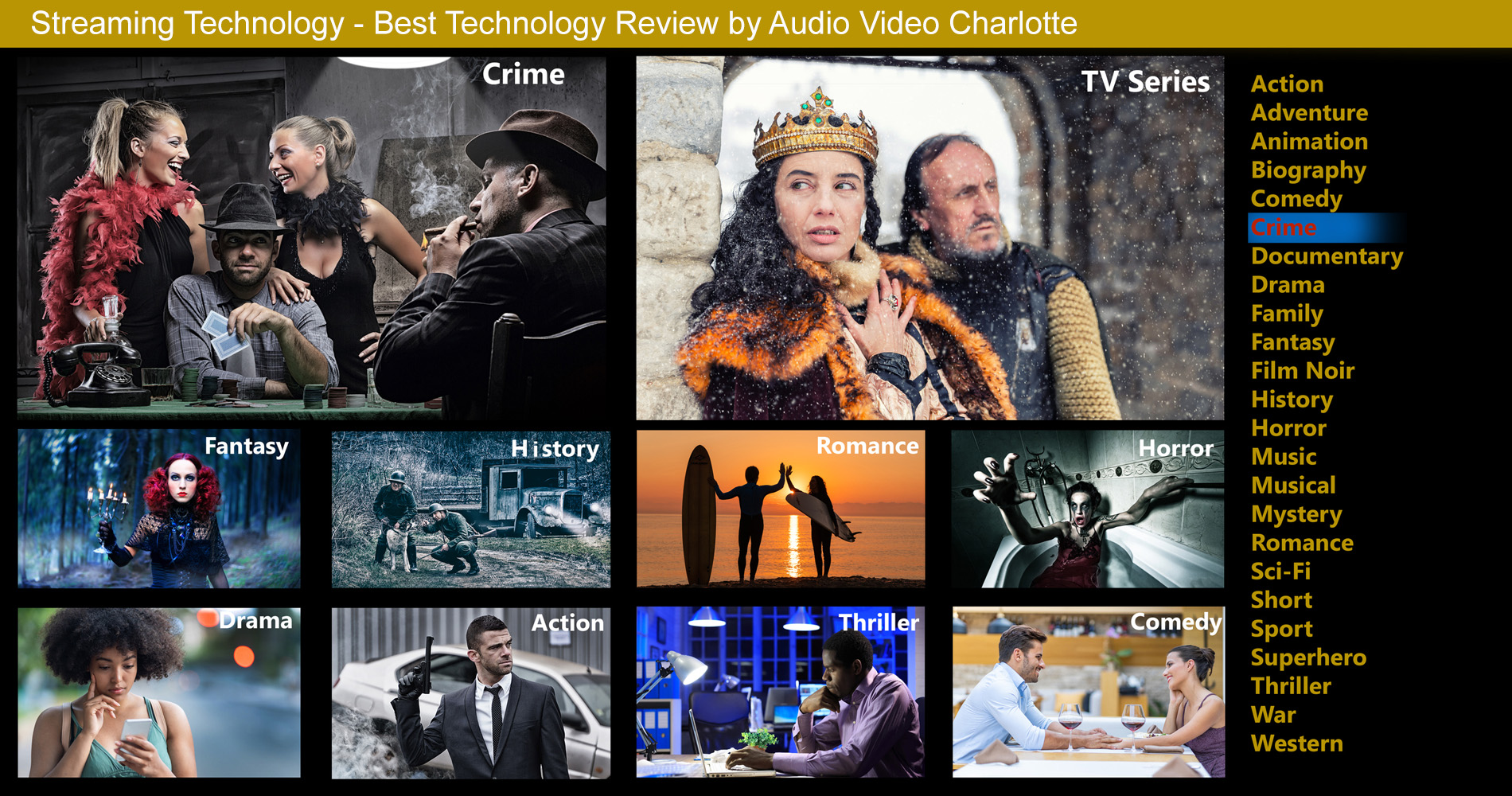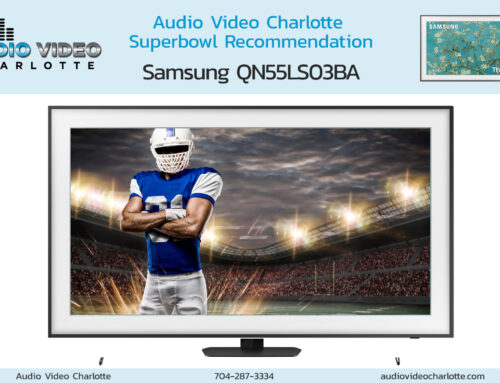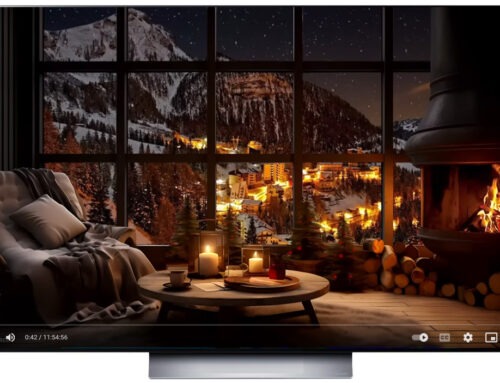How exactly does streaming work? And what is the best streaming technology to use in 2024? If you find yourself asking these questions, you are not alone. With more streaming services available now than ever, and the seemingly ubiquitous presence of smart TVs, it’s a good time to gain a better understanding of how streaming works, and additionally, which technology you should have so you are always ready for family night or date night on a cold February night. Nothing beats a great movie at home, especially with crystal-clear imagery and no lag time!
Though the title implies otherwise, smart TVs are not that smart. They may come with their own streaming services embedded, but the quality isn’t what it could be. Alternatively, an individual streaming device working in tandem with a smart TV is…well, smart. The question now is which streaming method is best, using a separate box or a stick that plugs into the TV?
Box or Stick–Which is the Better Option?
Streaming sticks work by plugging directly into your smart TV (these are usually small devices that plug into a HDMI port located on the back or side of the television). They work along with the WI-FI that is already connected to the TV to provide video display. The problem with these sticks is that they have limited physical interfaces, only a few options for supporting apps, and the quality of streaming itself is less than ideal. In a pinch, a stick will work–but you may eventually want something that provides a bit faster, clearer service.
A streaming box, however, is an ideal option. These have more connectivity options than streaming sticks, such as Ethernet, HDMI, USB 3.0 ports, and WI-FI 5. The box is a separate mechanism that connects to the TV through the HDMI port, and you can also use the Ethernet as an optional internet connection for faster service. The USB port(s) can be used to load unsupported apps or to play local media from a separate hard drive. Some of these streaming boxes also include ports for an SD card and/or for AUX audio out.
Top Three Streaming Devices
At Audio Video Charlotte, we test out all of our products, even those items we don’t carry, so that we can provide the best advice to our customers on which technology they should use. When it comes to streaming devices, we’ve tried them all! Out of the plethora of boxes and sticks, these are the three we recommend using:
- Apple TV
Apple TV is easy to use and quite impressive to take in. With Apple, you can stream all the video content from the iTunes Store, plus anything stored in the Cloud. Apple TV serves as a computer attached to your television as well as a streaming device, so you can easily download apps like Netflix, Hulu, HBO, Youtube TV, plus tons more. You can also use services like AirPlay and iPhoto to customize your screen. All Apple TVs come with dedicated processors that make it run quickly and smoothly. Since the Apple TV box is separate from the TV it is serving, there is hardly ever any lag, and switching from apps is seamless.

- Roku Box
The Roku Ultra has one of the strongest dual-band WI-FI capabilities. It also comes with an Ethernet port for wired connections, should you need to plug in an outside source, plus it can stream in Dolby Vision for that extra clarity. There is a voice remote that allows for hands-free activation so you can easily search for your favorite show or movie–you can also find a lost or hidden handheld remote by calling out for it. Another cool feature of the Roku Box is that it comes with a headphone jack built into the remote so you can watch shows in private while others sleep or carry on a conversation in the same room. It even comes with its own high-quality headphones.

- Roku Stick
If you are in the market for a less expensive, quick fix for streaming, we recommend the Roku Stick. As mentioned earlier, streaming sticks may not be the ideal choice, but they do work. For around $70, you can get a 4K Plus version that allows you to stream in Dolby Vision–and the Roku Stick works 30 percent faster if you use a long-range wireless receiver. Simply plug the Stick right into your TV’s USB or HDMI port and begin streaming away. There is no remote, and the stick may not last quite as long as a box, but in a pinch this is a great option.

Best Streaming Services
Now that we understand the difference between a streaming stick and a streaming box, and we know which three to choose from, what about streaming services?
There are tons of them out there, and there seems to be more coming out every day. When it comes to narrowing them down to the best one(s) for you to use, keep in mind that most of these providers specialize in one or a few streaming elements, rather than operating as solely the best service of them all. Let’s have a look at some of our favorites:
- Hulu Plus Live TV. Though there is not one service made to rule them all, Hulu Plus Live is our overall favorite because it provides a perfect mix of live streaming and on-demand streaming. Sure, its channel selection is not the best, but it’s not so far off to keep this service from being our number one. We particularly like Hulu’s significant catalog of on-demand content, as well as, the $77 service cost that includes stations such as Disney Plus, ESPN Plus, and an unlimited DVR.
- YouTube TV. If you are looking for the best family-friendly service with an incredible channel selection, YouTube TV is it. For $73 a month, you get a high-quality cloud DVR with unlimited storage and up to nine months to watch recordings (most streaming services only give 30 days). The interface itself is somewhat basic with no frills, but you still get most of the features a high-cost cable service provides. One other benefit to using YouTube TV is that it offers surround sound on live broadcasts–and they are the only service to do this.
- Sling TV Blue. For those working with a tight budget, Sling TV Blue is the cheapest option that is still able to offer plenty of channels. It is offered at around $40 a month and offers live-streaming TV packages–Orange and Blue packages. Both options come with a lot of channels, but differ in variety: Orange is more ESPN and Disney while Blue is Fox and Discovery. Both have more than these two stations, but these are the types of broadcasts offered. Your best bet is to get both Orange and Blue for only $55 a month.
- DirectTV Stream. For the big sports fans, the constant channel flippers, this one is for you. DirectTV Stream is offered at $75 a month, which is the most expensive option listed, but only by a few dollars. What you are paying for is a ton of channels and the ability to swipe left and right to quickly change channels, and get unlimited DVR capability (at least for new users–otherwise it is an extra $10 a month). For the big sports fans, there’s a $99 option that allows you to follow local NBA or MLB teams, and offers more access to regional sports networks than any other service provider. You also get over 240 local PBS stations!
No matter the device or service you use, there is one incredibly important thing to keep in mind: Audio Video Charlotte provides FREE expertise on setting up your TV, getting the right sound, even programming your streaming service for you! Get your streaming done right with Audio Video Charlotte today.






